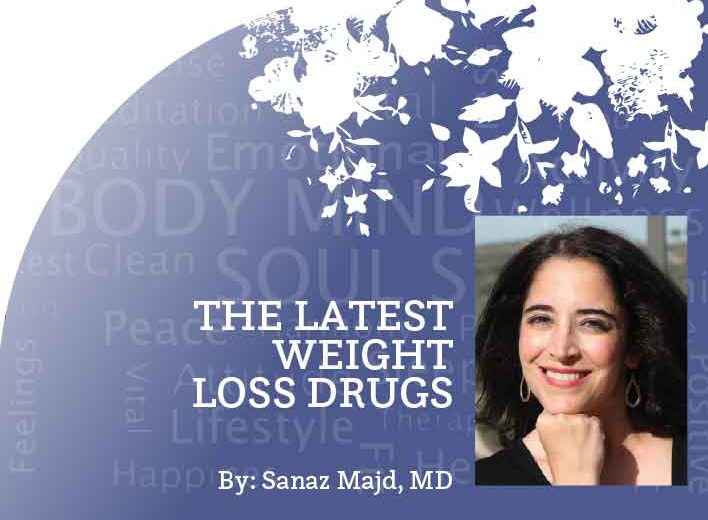HEALTH RECOMMENDATIONS FOR TRAVELERS
 Although the pandemic has taken a few steps back in recent months, travel plans do not seem to be thwarted as airports are packed, travel costs are skyrocketing, and supply is not meeting the high demand for flights. Americans are not holding back on traveling, even with the new variants sweeping the nation.
Although the pandemic has taken a few steps back in recent months, travel plans do not seem to be thwarted as airports are packed, travel costs are skyrocketing, and supply is not meeting the high demand for flights. Americans are not holding back on traveling, even with the new variants sweeping the nation.
So if you are planning on traveling, it pays off to be well prepared for unforeseen medical illnesses during your travels, most especially during a pandemic. So, I wanted to dedicate this article to a list of must-take items in your travel first aid kit. This is what I generally take on my own travels; but, depending on your destination, your needs may be different and it is always wise to research the local health conditions of your destination prior to your trip.
Here is a general list to begin considering:
Protective Masks:
N95 respirators are most protective, filtering about 95% of airborne particles in the air, and are the masks that healthcare professionals wear on the job. However, they are by far the most constricting and very difficult to tolerate for most (even adults).
Beware of Amazon because counterfeits of N95 masks are common. Here is a link on how to spot a counterfeit mask, along with lists of NIOSH-approved masks and known counterfeits: https://www.cdc.gov/niosh/npptl/usernotices/counterfeitResp.html.
A KN95 respirator, on the other hand, is another option that has been authorized by the CDC as an alternative during the world’s PPE shortage (although their use is not permitted in the healthcare setting). Although better tolerated, they are manufactured in China and may not be as protective. About 60% of KN95 respirators that NIOSH evaluated did not meet the standard requirements.
If neither N95 nor KN95s are accessible or tolerable, then the next best option would be to double mask using a disposable surgical mask under a cloth mask. I personally send my kids to school using this method.
All of these options are better than a simple cloth mask, which has been shown to be the least protective.
The Biden administration has approved allocation of N95s for each adult and will soon be distributing them to local pharmacies. Each adult can receive 3 free masks; none for kids has been allocated yet, however.
COVID Test Kits:
The government has also recently approved funding for the mailing of 4 free at-home rapid COVID test kits per household. Note that the timing of self testing does matter, and if used outside that window of time, false negatives are possible. Here is the link to sign up: https://www.covidtests.gov. Taking along these home test kits on your trip may be of value.
Pain/Fever Reducers:
Note that acetaminophen (Tylenol) does not require food intake, but ibuprofen (Advil, Motrin) does as it can irritate the stomach lining if taken on an empty stomach. Do not forget to take some along for your children, as well.
Antacids:
Antacids are especially useful if you are prone to heartburn or acid reflux. But new foods, spices, and flavors can induce symptoms for some. The category of acid reducers that omeprazole (Prilosec) belongs to (proton pump inhibitors, or PPI) are stronger but may take a few days to kick in; but the weaker H2 blockers such as famotidine (Pepcid) or ranitidine (Zantac) are shorter acting and more quick to provide relief. Both can be taken simultaneously if symptoms are severe/persistent enough. They are all over-the-counter medications (OTC).
 Small First Aid Kit:
Small First Aid Kit:
This should include bandages of various sizes (take waterproof ones if you will be swimming), antibiotic ointment, a small antiseptic wound cleanser, and small scissors.
Anti-histamines:
If you are prone to allergies, non-drowsy OTC loratadine (Claritin), cetirizine (Zyrtec), or fexofenadine (Allegra) may be useful in case of symptoms, given you will be in a potentially unfamiliar environment. These symptoms include sneezing, itchy/watery eyes, runny nose, or hives. Note that diphenhydramine (Benadryl) is more potent but it causes drowsiness and is shorter-acting. Obtain the generic alternatives, as they are less costly.
Hand Sanitizer:
Most well-equipped hotels have this readily available. However, a trial-size container for every member of your household may still be useful for other times during the traveling process, such as in airports or on the plane.
Disinfectant Wipes:
Perhaps short of being obsessive compulsive, I do purchase travel disinfectant wipes and wipe up all surfaces when first entering a hotel room. This includes countertops, table tops, light switches, remote controls, door knobs, the safe keypad, shower surfaces, and of course the toilet surface and knob. You can never be certain how well the room was disinfected prior to your use or who was staying in the room prior. Always better to err on the side of caution.
Insect Repellant:
If mosquitoes are rampant at your destination, an insect repellant would be wise. Mosquitoes are one of the most common vectors of disease. The most effective are those containing DEET (N,N-diethyl-3-methylbenzamide); although they have not been shown to be harmful in concentrations present in OTC products, there is some controversy over its use. DEET concentrations vary from 10 to 75%, however its efficacy plateaus at about 30% and higher concentrations than this are often unnecessary. Note that DEET can degrade plastic surfaces which come into contact with it.
In destinations with low levels of mosquito-borne disease, however, milder repellants may be sufficient. These include ones containing picaridin (a plant-derived compound which is odorless and non-greasy unlike DEET, and second to DEET in efficacy) or PMD (ingredient in oil of lemon eucalyptus, half as effective as DEET). Other agents marketed as repellents, such as citronella, botanical oils, various supplements, electronic devices, and repellent bracelets have not been shown to be effective.
Hydrocortisone 1%:
This is an OTC cream that is useful for itching or rashes—think insect bites or poison ivy. Stronger steroid prescription topicals can also be used in lieu of hydrocortisone, but their use should be avoided on the face or groin, as the steroid creams can cause skin thinning and those areas are some of the thinnest on your body. They are most commonly applied as a thin layer twice a day for no more than 14 days max.
Motion Sickness Medication:
An example is OTC dramamine, which may be useful for sailing or shorter-duration boat rides. Scopolamine is a prescription alternative, a small patch placed behind the ear and left for 72 hours and may be more useful for longer cruise ship trips. Note that motion sickness medications are often sedating and may cause sleepiness.
Sun Protection:
Sunscreens with SPF 30 or higher—labeled as containing both UVA and UVB ray protection, with either zinc oxide or titanium as the active ingredient—are the most effective. Sunscreen is fully effective for no longer than 2 hours, however, and must be reapplied to maintain full efficacy.
Note that various destinations (such as Hawaii and various parts of Mexico) may have sunscreen regulations and some require reef-safe products. Also, do not forget about lip protection with SPF, eye protection (sunglasses with UVA/UVA protection), and a broad brimmed hat for further face protection. Long sleeved swimwear and/or long sleeved rash guards, especially for children, may also be a wise option. If you are prone to sunburn, you may also want to take along aloe gel.
FOR INTERNATIONAL TRAVEL:
Check out the Center for Disease Control (CDC) page for the country you are visiting as early on as possible, because there may be certain vaccine series requirements and some of them are as spread apart as 6 months or more. https://wwwnc.cdc.gov/travel/destinations/list/
You also have the option to seek a travel doctor who is well versed in travel requirements and can optimize your health prior to traveling internationally, or seek a travel clinic at a local pharmacy such as Costco which may be a more economical choice (as many health plans do not provide travel clinic coverage).
Also, do not forget to call your health plan and determine if you have healthcare coverage while traveling abroad. Learn the details before you go in case of an emergency.
Traveler’s Diarrhea Treatment:
If traveler’s diarrhea is endemic at your destination, a prescription antibiotic may be worthwhile. However, it is important to note that most traveler’s diarrhea is still viral and antibiotics are not effective. But bloody diarrhea, specifically, is more often linked to bacterial causes. I generally advise my patients to avoid using antibiotics for mild to moderate diarrhea, which is typically self-resolving. If you do take along a prescription, ask your doctor when to actually take it in case you experience diarrhea on your trip.
Anti-diarrhea Medications:
OTC loperamide (Imodium) is an example. Again, tolerable diarrhea does not need to be treated and can be left alone. This is one item I personally do not take with me, but if you are prone to diarrhea and your doctor deems it safe to take, it is an option.
Water Purification Tablets:
Research the water quality of your destination if traveling internationally; bacteria, viruses, and parasites can be transmitted through consuming water and/or ice, or using it to prepare food or even brushing your teeth. You may boil the water for a full 3 minutes once it is rolling or take along water purification tablets. Here are the CDC recommendations for more details: https://www.cdc.gov/healthywater/emergency/making-water-safe.html.
Food poisoning is common with international travel. In general, avoiding the consumption of water/ice and opting for cooked food (versus raw) will lessen your risk of contraction.
Last of all, do not forget to have fun! Bon voyage and happy, healthy travels!
Sanaz Majd, MD is a board-certified Family Medicine physician and host of the Majd MD YouTube channel (@Majd MD), reviewing the latest medical topics and headlines. You can also follow her on Facebook or Instagram: @SMajdMD.


















